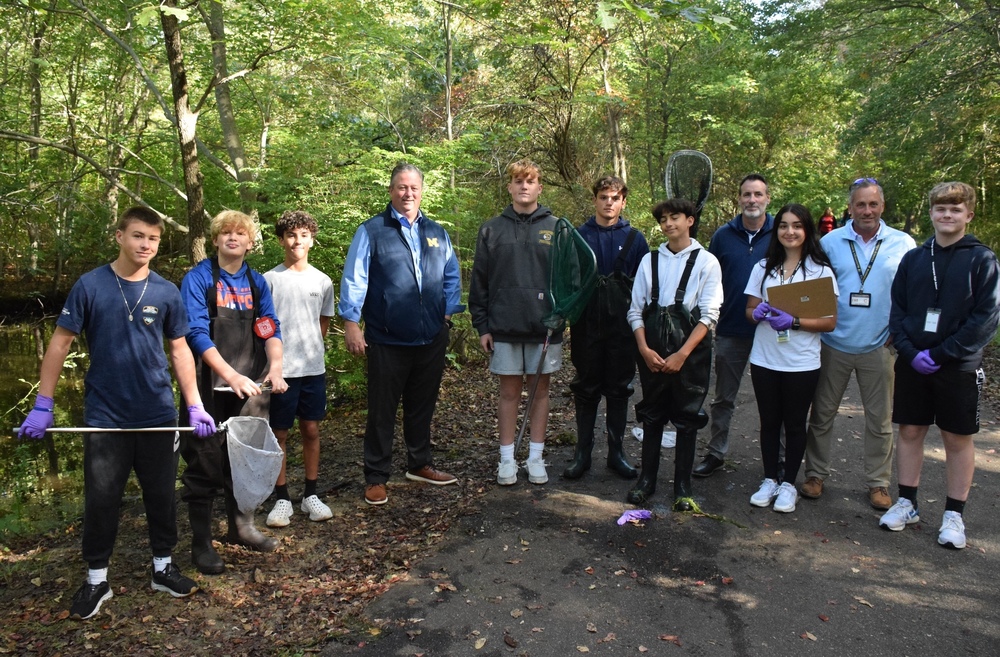Nearly 50 Massapequa High School students turned a local park into their classroom as they studied the stream at the Massapequa Preserve on Oct. 3. The observations were part of a long-term data collection in partnership with renowned science research facilities.
Junior and seniors from the high school’s Advanced Placement Environmental Science class took part in “A Day in the Life” river study program. Along with their teacher Thomas Dempsey and scientists from Brookhaven National Laboratory and the New York State Department of Environmental Conservation, 13 students stepped into the stream to gather water samples.
Outfitted in large boots and wading gear, they floated bottles downstream, recording time and distance to determine river flow. Students analyzed pH and dissolved oxygen levels, and did chemical testing for nutrients such as nitrate and phosphate. The young scientists also studied fish species and macro invertebrates, which are an indicator of water quality.
Massapequa is one of several schools collecting data in streams and rivers across Long Island from early September through mid-October. The school has been gathering data on the Massapequa Preserve stream every fall for more than a decade. The information is uploaded to a database that all participating schools can access. Mr. Dempsey said his environmental science students will be immersed in a water quality unit later this year, making comparisons among multiple bodies of water and also reviewing year-over-year changes at their local stream.
From the Ames Campus, 35 ninth graders in the science research program were at the preserve collecting data for a DNA project in partnership with Cold Spring Harbor Laboratory. They were assisted by teachers August Eberling and Nicole Gonzalez.
Students collected samples of macro invertebrates, and will extract DNA to figure out the exact species. That work will be done during a trip to Cold Spring Harbor in October, followed by a visit in February for bioinformatics and DNA analysis. In June, the ninth graders will present their findings at a symposium.
Mr. Eberling said that Ames students have been participating in the Massapequa Preserve DNA study for several years, collecting data that allows them to observe long-term changes to the stream. It gives them real-world field experience as well as an opportunity to work with practicing scientists in a professional setting. The skills they develop and connections they make benefit them for their independent science research projects in ninth grade and beyond.

